Opposite Field Hitting: Theory, Cues, and Drills (2 FREE Reports at the End)
At some point, they reach a point where their inability to hit the ball the opposite way puts a ceiling on their playing career. In this post, I will be discussing the thought process behind hitting the ball to the opposite field, a few common mistakes coaches make, some good cues to give your players, and a progression of drills to help them translate what you do in practice to the game (which is the ultimate goal).
Thought process and cues
One of the largest hurdles young players have in hitting the ball to the opposite field is mental. At the early youth level, the best pitchers do two things well, they throw strikes (probably not yet locating) and they throw hard. Hitters quickly learn that in order to hit the best pitchers in their league, they have to get the bat to the ball fast.
Many times they end up cheating by lunging forward, trying to start earlier, and greatly shortening their swing. As they get older, the best pitchers not only throw hard, but can locate pitches on both sides of the plate, and change speeds effectively.
At this point, those “cheats” that may have been successful in the past, now make you susceptible to pitches on the outer third and off speed pitches. Good hitters are the ones who are quick enough to catch up to fastballs, but have the ability to wait on fastballs away and off speed pitches.
The phrase I like to use to introduce the theory of opposite field hitting is “let it get deep.” This means that hitters need to let the ball travel deeper to into the hitting zone instead of out in front of the plate where they used to hitting it. This is a difficult adjustment for many young hitters because they are afraid of being late.
To help them get over this fear, have them watch a major league game and see how many foul balls go the to the opposite field, and how many foul balls go to a hitters “pull” side. Major leaguers are often late, by design.
Getting your players to wait to let the ball get deep is the single most important concept to master when a players is trying to hit to the opposite field. This will allow them to not feel as though they have to “guide” the ball to the opposite field. You will know a player is trying guide the ball when they drag the barrel under their hands and have a very tentative swing.
It will appear as though they are “aiming” the ball that way. The phrase we use to avoid this is “let it get back, and attack.” This reminds them that they can take their normal aggressive swing as long as they let the ball get deep in the zone.
Attempting to guide the ball with the hands will result in weak contact, and many pop-ups to the opposite field. Hitters still need to generate power from the ground up, and generate an aggressive powerful swing when hitting the ball to the opposite field.
Click here to get our 2 Free Reports on Opposite Field Hitting
Opposite Field Drills
Opposite Field Controlled Scrimmage
[wp_ad_camp_3]
 Posted by Kyle Nelson
Posted by Kyle Nelson- Posted in Hitting, Practice Organization
 Oct, 20, 2014
Oct, 20, 2014 4 Comments.
4 Comments.
Elite members login here
Check out what’s New/Hot!
Recognizing, Diagnosing, and Fixing Common Hitting Flaws eCourse The 3 metrics we tested on Blast motion sensors this year Sneak Peek Inside an Elite Q and A The batting practice continuum Elite Member’s area table of contents 50+ “Chaos” hitting drills
5 sample Chaos hitting drills FREE
Mental Skills and Culture Building The hitting pyramid Welcome Elite Member, Trey! Ideas for a pitcher first practice 12 week bat speed improvement plan Make plans this offseason to have your team playing their best baseball at the end of the year” Top 5 hitting drills to translate practice skill to game performanceHow we used Blast Motion sensors with a team in 2019
What to do if your hitters are overmatched Welcome Elite Member, Tommy! Setting your baserunners up for success Welcome Elite Member, Mike! A consulting call with Elite Member Matt FREE Web Clinic: Developing Athletic, Consistent, Extraordinary Infielders
 Coach Kyle Nelson
Coach Kyle Nelson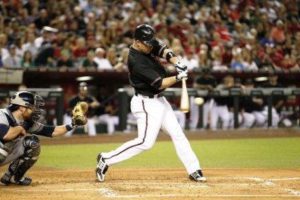
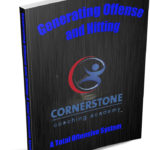
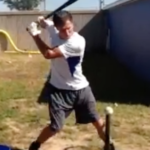
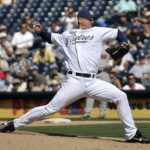
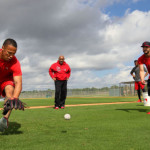


Great information. Lucky me I ran across your website by chance (stumbleupon). I have book marked it for later!
I’m glad you enjoyed it. Hope to have more quality articles coming soon. Thanks for reading!
[…] Youth Baseball Coach Preseason ChecklistTop 10 Most Misunderstood Fantasy Baseball Misconceptions: Leading Indicators | Rotoman's GuideUsing Baseball Swing Habits to Improve Your Golf Swing – GolficityThundercling America’s Finest Climbers to Split Time on the Baseball Diamond? The Rise of the El Portal CraggersDiggin Lazer Pitch Baseball™ – Review and Giveaway (Holiday Gift Guide) | Hugs 'n Tugs Mom ReviewsDIY BASEBALL SOFTBALL TRAINING EQUIPMENT GUIDE | TheBaseballTraining.comeaston woodGift Guide #2: For the Boys « Covet LivingBurns offers chance to play ball in Europe – Canadian Baseball Network Opposite Field Hitting: Theory, Cues, and Drills (2 FREE Reports at the End) – Cornerstone Coaching… […]
[…] they’re hitting a fastball away, or a breaking ball, hitters have to wait longer to swing (see “Opposite Field Hitting” post). The goal with two strikes should simply be to put the ball in play, but be ready to […]